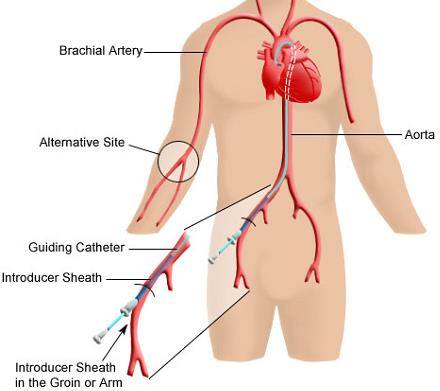 What is Peripheral Angiography?
What is Peripheral Angiography?
Peripheral Angiography is an outpatient diagnostic study for patients who may have blocked blood vessels in their legs and lower body. Utilizing an iodine-based dye that is injected to make arteries (which aren”t detectable by X-rays) visible when mixed with blood, Dr. Augusto Villa can have a “map” of a patient”s blood vessels to determine if there”s disease or blockage and where the problem is located.
In the short term, blocked arteries can lead to leg cramps and can deter wounds in the lower extremities from healing properly. In the long term, the condition can set the stage for high blood pressure or stroke. A peripheral angiogram may also be used to detect potential blood-flow problems in the upper body and in the abdominal area.
How long it takes the Peripheral Angiography Procedure?
The angiogram procedure can take as little as an hour, or as long as three hours to be completed, and the procedure is performed under local anesthesia, while the patient is awake.
Before the Peripheral Angiography Procedure
- Tell Dr. Villa about all medications you take and any allergies you may have.
- Don’t eat or drink after midnight the night before the procedure. If Dr. Villa says to take your normal medications, swallow them with only small sips of water.
- Arrange for a family member or friend to drive you home.
During the Peripheral Angiography Procedure
- You may get medication through an IV (intravenous) line to relax you. You’re given an injection to numb the insertion site. Then, a tiny skin incision is made near an artery in your groin.
- Dr. Villa inserts a catheter (thin tube) through the incision. He or she then threads the catheter into an artery while viewing a video monitor.
- Contrast “dye” is injected into the catheter. You may feel warmth or pressure in your legs and back. You lie still as x-rays are taken. The catheter is then removed.
- If a narrowing of the artery is detected, Dr. Villa may opt to insert a percutaneous transluminal angioplasty (or PTA), which utilizes a small balloon to improve blood flow to the legs. Dr. Villa may insert a stent, attached to a balloon, which expands the stent – which remains permanently in the artery – when it is deflated and opens the artery.
After the Peripheral Angiography Procedure
You’ll be taken to a recovery area. A nurse will apply pressure to the site for about 10 minutes. You will need to keep your leg still and straight for a few hours. Dr. Villa will discuss the results with you soon after the procedure.
Some patients are able to leave the hospital the day of the procedure (although they aren”t allowed to drive themselves home) and others usually don”t stay more than another day.
Back at Home
The patient is advised, once arriving home, to drink extra fluids to flush out any remaining dye, to take all medications as instructed.
Avoid any heavy lifting, don’t exercise, avoid walking and taking stairs, and avoid bending and lifting for several days. Dr. Villa may give you other care instructions.
